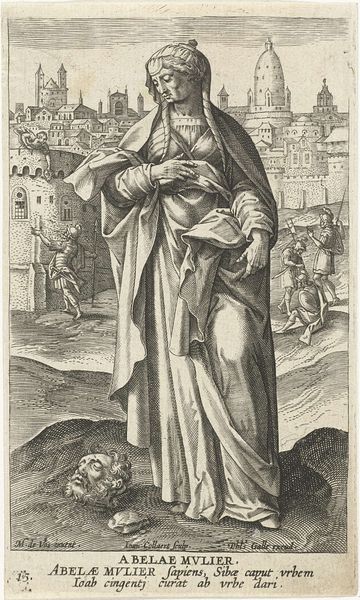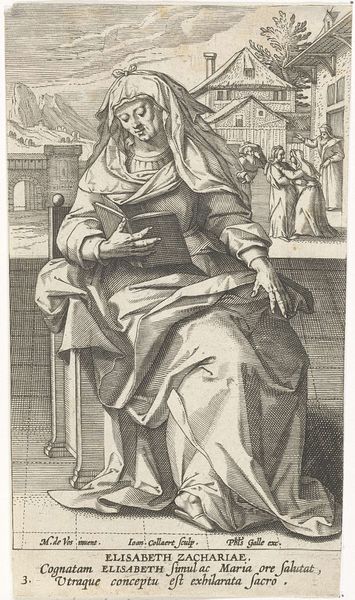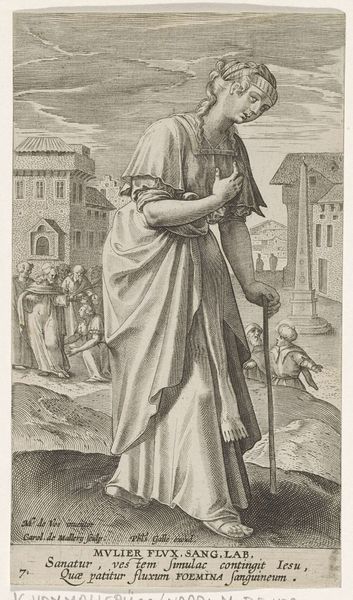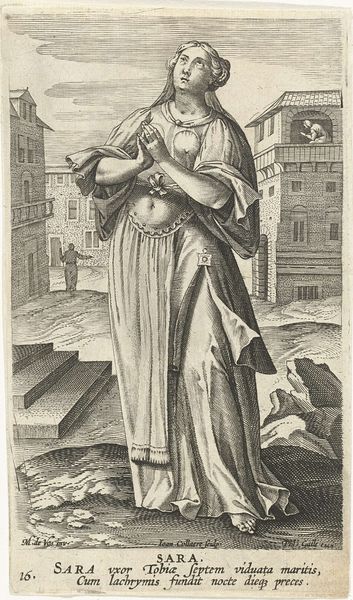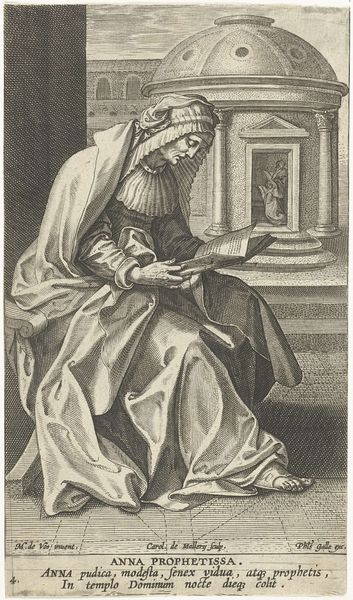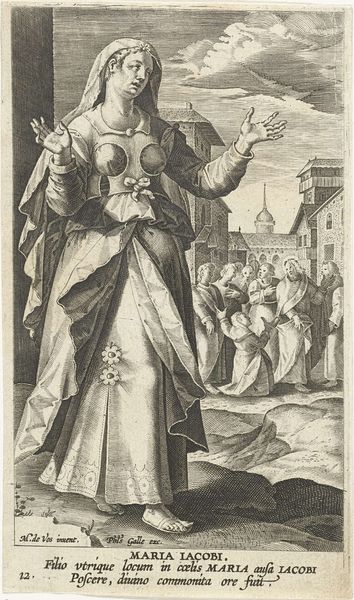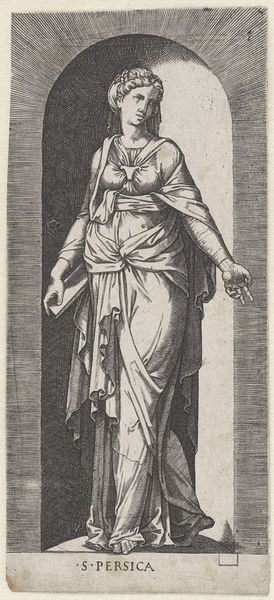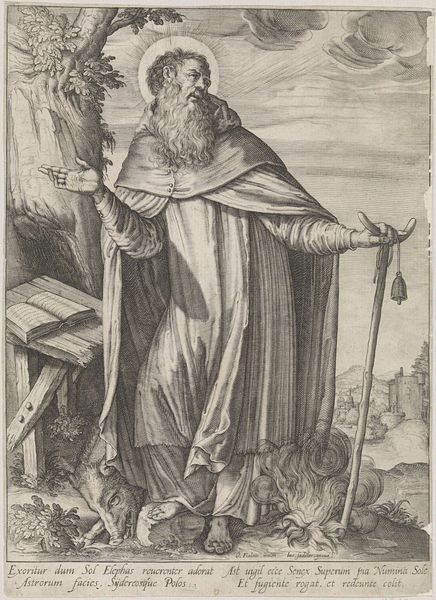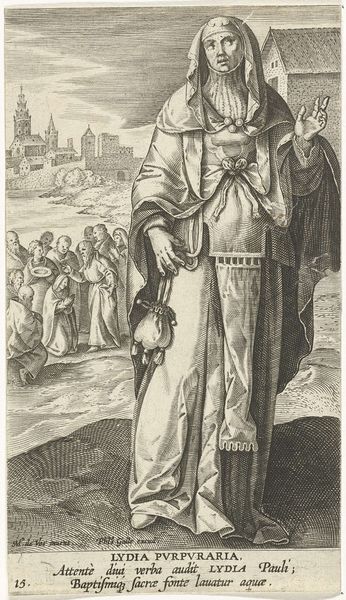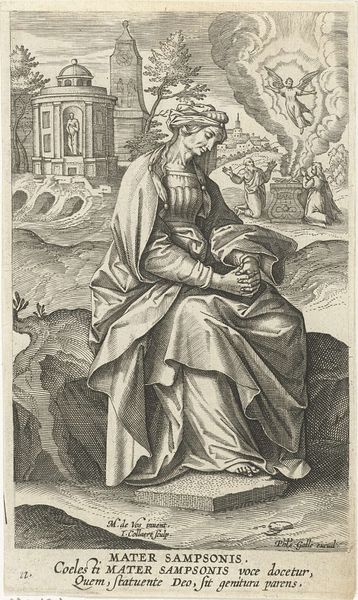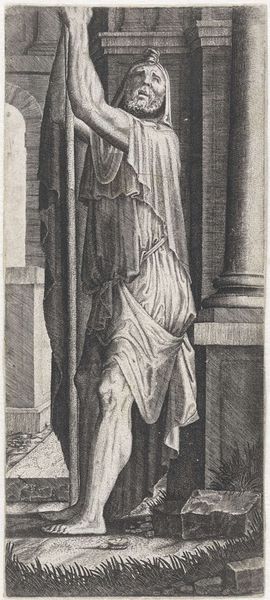
print, engraving
#
portrait
# print
#
old engraving style
#
mannerism
#
figuration
#
line
#
portrait drawing
#
genre-painting
#
northern-renaissance
#
engraving
Dimensions: height 153 mm, width 88 mm
Copyright: Rijks Museum: Open Domain
Curator: Let’s examine "Gebochelde vrouw" created between 1595 and 1599 and currently held in the Rijksmuseum. The artist is Jan (II) Collaert, and it's an engraving, very much in the Northern Renaissance style. Editor: My immediate impression is of somber dignity, oddly juxtaposed with a noticeable sense of physical unease, and almost caricatured figures in the background. The line work creates such dramatic contrast despite the limited palette. Curator: Indeed. Notice the bent posture of the central figure, a woman using a walking stick. The etching includes the latin caption *MVLIER INCLINATA,* suggesting an affiliation to both Christian images, such as ‘The woman with incurable sickness cured by Christ’, and traditional Memento Mori with a human shaped by illness or burdened by age. This depiction has resonance, doesn’t it, across different contexts? Editor: The drapery certainly commands attention – it is very elaborately constructed. Observe how the dense, cross-hatched lines build volume and texture, yet flatten in certain areas, particularly around her sleeves. It both emphasizes her figure but paradoxically adds to a sense of obfuscation, hiding her shape. It’s masterful in its formal tension, the line acting both as a decorative and as a representational tool. Curator: Absolutely, the way Collaert uses line becomes integral to the image's symbolic depth. Her stance, framed by the crowd of miniature, devout characters attending her – and those rather foreboding building blocks in the backdrop. It suggests not only physical limitation, but potentially spiritual elevation through endurance. We might see, here, the burdens of earthly life but a spiritual nobility nonetheless. Editor: So, form mirrors theme then, reflecting and refracting her social positioning and potential spiritual redemption. The artist, using line work alone, has brought many aspects into focus: the material and ephemeral condition of a female's figure – and its complex representation via surface and depth, through lines on paper. Curator: And in looking closely at these lines and forms we see how past symbols and meanings echo across art history—perhaps encouraging a renewed appreciation of Collaert's creation. Editor: Indeed, a close formal read makes one consider what it truly means to 'see.' Thank you, my viewpoint is enhanced.
Comments
No comments
Be the first to comment and join the conversation on the ultimate creative platform.
